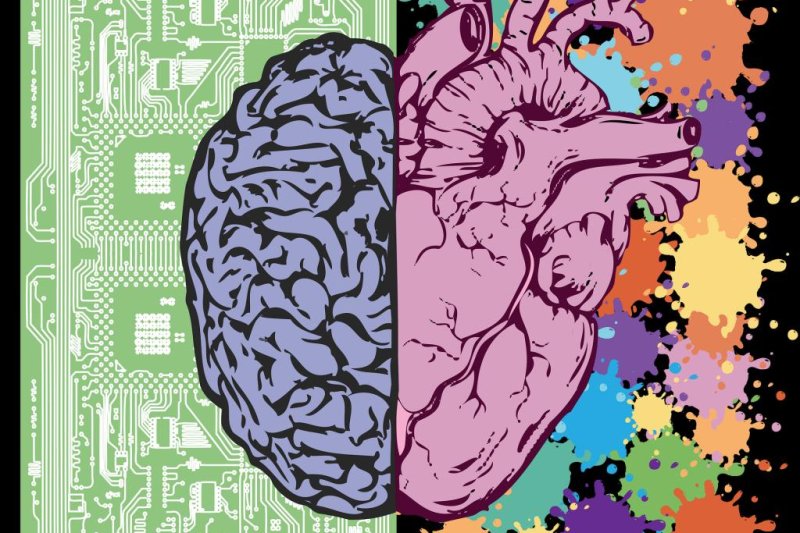New research suggests the vibrational influence of the human heartbeat on the electrical signals produced by the brain can help scientists distinguish between different types of neurons. Photo by
Pixabay/CC
March 11 (UPI) -- When the heart beats, it causes the human brain to jiggle. According to a new study, the phenomenon has helped scientists classify different types of neurons.
"The beginning of the study was the realization that spike waveforms measured in the brains of epilepsy patients showed robust and periodic -- i.e. repeatable -- changes in their shape that lined up with the EKG," Costas Anastassiou, senior researcher at the Allen Institute in Seattle, told UPI in an email.
It's rare for the heartbeats of epilepsy patients with implanted electrodes to be measured during neurological studies, so data comparing the heart and brain patterns is hard to come by.
"Very few studies look at the relationship between heart and brain activity as these two systems are typically studied in isolation," Anastassiou said. "This is true especially for brain circuits related to learning and memory."
The latest study, published this week in the journal Cell Reports, is one of the few.
Despite the dearth of research on the subject, scientists knew that the brain receives feedback from the heart, and that brain circuits can be influenced by the activity of the heart -- evidence of the strength of the body-mind connection.
"We want to understand what the role of these brain-heart interactions is in cognition and mental health," study co-author Ueli Rutishauser, of Cedars-Sinai Medical Center, told UPI in an email. "Cognitive states such as anxiety and stress have strong effects on the heart. To start to understand these interactions it is critical that we have a way to differentiate between activity changes and electrode motion due to pressure changes, which is what we have achieved in this paper."
Neuronal activity produces electric signals that take a waveform shape, which can be measured by an electrode. After noticing that the spike waveforms produced by the same neural pathways were changing shape in synchronization with the heartbeats of patients, researchers decided to investigate further. They realized that the changes in spike waveforms produced by various neurons weren't all the same.
"Our study precisely shows that depending on the type of neuron, its spike shape will be affected by the heartbeat-related motion in different ways," Anastassiou said. "This is the reason that, while in the absence of any motion most neuron types look alike in terms of spike shape, the inclusion of motion-related properties results in our ability to identify and separate between various types."
By analyzing the varying effects of motion on spike waveforms, scientists identified three types of neurons: cells that produce a narrow spike, or NS; cells that produce a broad spike one, or BS1; and cells that trigger a broad spike two, or BS2.
Because measuring the precise distance between an electrode and a spiking neuron is exceedingly difficult, scientists had to produce sophisticated neuron models to simulate the vibrational impacts of the heartbeat on the brain.
"Since figuring out this distance experimentally is hard, we used a new computational approach that allows us to make very detailed computational models of neurons," Anastassiou said. "In a next step, we simulated the presence of an extracellular electrode close to these cells. And finally, we added small, periodic motions in these simulations in an attempt to capture the motion introduced by the heartbeat."
By comparing the results of their simulations with the experimental data, scientists were able to confirm differences in the way spike waveforms are influenced by heart rhythms.
Authors of the new study estimate that their findings are just the beginning, and that their methodology will open the way for new, more sophisticated analysis of neuron diversity.
Previous sequencing efforts suggest there are hundreds of different neuron types in the hippocampus alone, but researchers don't have a good grasp of how these different neuron types combine to produce complex behaviors such as learning and memory.
"Our study introduces a method to identify discernable cell types in humans, allow monitoring their activities during complex behaviors and ascribe specific roles to them," Anastassiou said. "Beyond basic science, the same approach could allow a much-refined monitoring of vulnerable cell types in disease."















